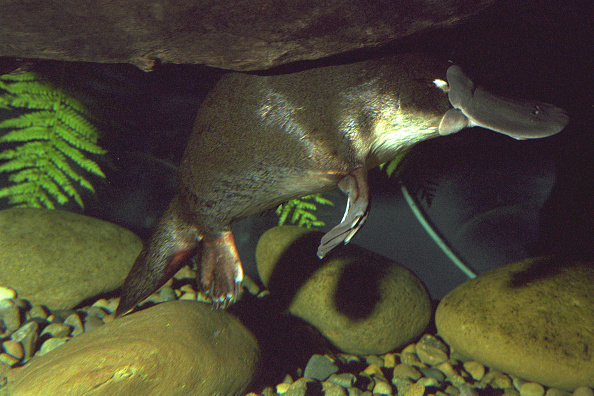Dreams have been a mysterious phenomenon for science. Brought to life by Sigmund Freud as a pathway to unlock unconscious thoughts, the study of dreams has advanced greatly since the second half of the twentieth century. The act of dreaming is a very distinct pattern of sleep. It has brain waves similar to being awake, while the whole body is paralyzed and only the eyes show some signs of movement. Found in the state of REM sleep (Rapid-Eye Movement), dreams have been linked to emotional healing, decoding emotions, and creativity. What makes dreaming such a strange enterprise is that, when you look through the animal kingdom, it seems to be dedicated to a few mammals and birds. Moreover, it seemed, at one point, to be absent in reptiles and fishes, which hold the keys to our ancestors. Over time, that mystery is becoming clearer for scientists.
The Origins of Dreams
Searching for REM Sleep in Animals
A neuroscientist from UC Berkley, Matthew Walker, has pointed out, REM sleep doesn’t make sense in other animals, like in marine mammals. Many of these animals must swim to survive, therefore, REM sleep seems unlikely, since it paralyzes the body during such state. Is because of this that you find strange sleeping behaviors in many of these mammals, like the dolphin, who sleeps with one brain hemisphere awake and the other on sleep-mode. The story changes with other mammals. Those who can go out of the water, like seals, show a larger span of REM sleep and can show similar states as other complex mammals.
The most captivating example of REM sleep in animals came from the platypus. This arcane and strange animal, with the body of a beaver and the beak of a duck, was the first shining light of REM sleep in other species of mammals, in the late 1990s. The platypus is one of three mammals that can lay eggs. It is because of this and “a range of other reptile-like anatomical features, features that have been lost in more ‘advanced’ mammals,” that the platypus stands out as an animal with ancient evolutionary baggage. As Henry Gee for the journal Nature points out, “monotremes have been distinct as a group for at least 80 million years, long before the dinosaurs became extinct.” Scientists’ jaws dropped when they found out that this monotreme has the largest span of REM-like sleep in all the animal kingdom – 8 hours, in fact. As Gee later notes, “an account from as long ago as 1860, before REM sleep was discovered, reported that young platypus showed ‘swimming’ movements of their forepaws while asleep.”
https://www.youtube.com/watch?v=y2D1TnLTLms
It might have looked like that this is the furthest that scientists could go to find the evolutionary origins of REM sleep, but new evidence has arrived. The first came in the form of Pogona vitticeps or as you might find in every pet store in North America, Australian bearded dragons. Scientists from the Max Plank Institute in Germany showed that these reptiles showcased two distinct types of sleep waves that we find today, slow-wave and REM sleep. As Walker declares in his book, Why We Sleep: Unlocking the Power of Sleep and Dreams, “If this finding is replicated, it would suggest that the original seed of REM sleep was present at least 100 million years earlier than our original estimates.”
The Zebrafish and Its Mystery
The second proof that REM sleep goes further back was published in Nature some days ago. In fact, it came from an unusual suspect, the zebrafish. Scientists at Stanford University, lead by Louis C. Leung, recorded neural patterns in two-week-old zebrafish that show distinct physiological responses when entering sleep. The fish needed to be two-weeks old because of its transparent appearance, which gave the scientist a window through the zebrafish’s nervous system. Jenny Howard from National Geographic sums up beautifully this elegant study:
“Most body activity is choreographed by an intricate network of nerve cells, or neurons. When neurons are active, calcium levels rise inside, so researchers genetically engineered the zebrafish to include a protein that would flash fluorescent green when it detected calcium, indicating an area of the body is active.
Then, the real work began. The team focused on zebrafish that were just two weeks old, because the fish are transparent at this age. This allowed the researchers to observe the brain and other activity inside the body without cutting into the animal or implanting electrodes, Leung says.
They immobilized the tiny fish by plopping it in a gelatin-like substance under the microscope and then started looking at key physiological components: brain activity, heart rate, muscle activity, and eye movement.
Almost immediately, the patterns of active and nonactive neurons started to stand out, revealing the “fingerprint” of activity similar to REM and non-REM sleep cycles.”
As Leung told NatGeo, “It just about took my breath away.” And indeed, it accomplishes a gigantic step to find the origins of dreams. As ScienceNews, the official magazine of the National Society for Science and the Public reports, this will likely put the origins of REM sleep far back as 450 million years ago.
A Wonderful Origin for REM Sleep
Although it is a great feat, scientists have a lot of work to do. First, these fishes were two-weeks old, which is not the same as an adult zebrafish, as Jerome M. Siegel explained. Siegel, who is a sleep scientist in UCLA and one of the finders of the platypus sleep, stated that “it’s hard to relate the results of this study to mammals, because there is so much evolutionary time between them and fish.” Still, the experiment takes your breath away. The same sleeping process responsible for Dmitri Mendeleev’s ordering of the periodic table might have its roots almost 500 million years ago.

